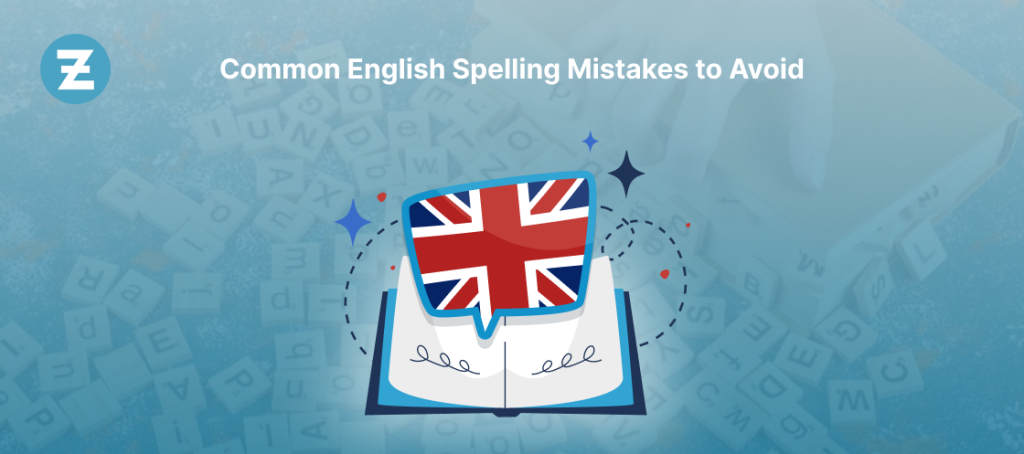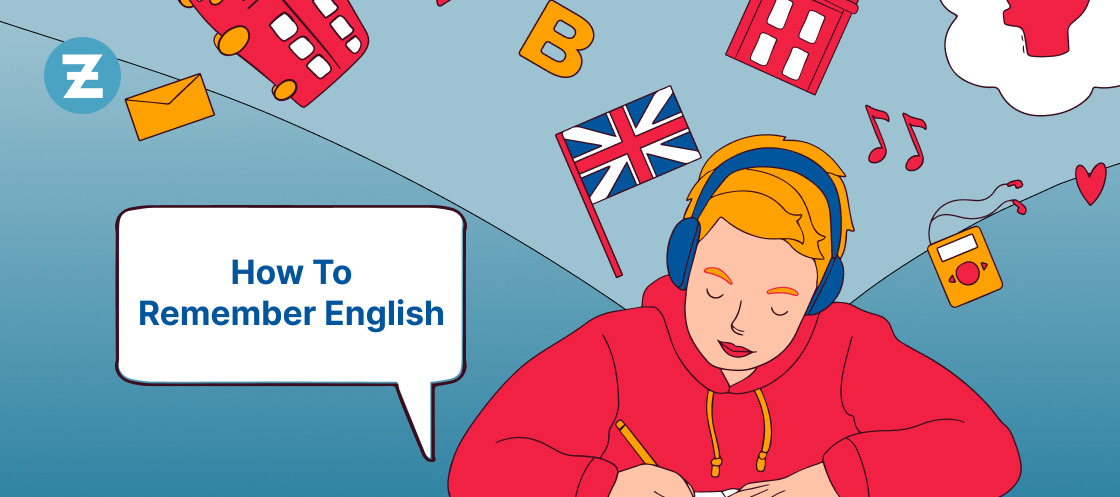English spelling puts a heavy emphasis on one thing: spelling. It’s almost like a superpower—the ability to change everything, even with a single letter. Sometimes it leads to misunderstandings or flipping messages. But by the end of this guide, we’ll understand how critical it is, look into the consequences of mistakes, and show you ways to navigate through these complex rules.
Why does spelling matter?
Writing words is key to getting your ideas across. You could be perfect at explaining things, but one small error can ruin it all. Readers will struggle to understand you if what you write isn’t spelled right.
Common Outcomes From Spelling Errors
Spelling errors can lead to all sorts of problems. And this isn’t a blanket statement, as you might think. There were cases where it received little attention, and then there were times when the mistake was so glaringly obvious that it led to professional and academic failure. Even if there’s only one spelling mistake in something you write, it’ll start to chip away at your credibility and show the reader that you don’t pay attention to detail and are lazy with your work. For people in school or working, these consequences stretch out even further. It could result in lower grades or losing a job opportunity.
Read also: Expert Tips and Tricks for Effortless Learning
Learning English spelling rules
The English spelling is hard. There are more exceptions than rules, which makes this language incredibly frustrating. But there is a method to this madness; as long as you understand the tenets and patterns of it all, you’ll have a great base for accurate spelling.
Vowels vs. consonants
Trying to figure out if a letter sounds like a vowel or consonant can be such a pain. In this blog, we’ll explore some ways learners find success when faced with telling apart similar-sounding pairs.
A vs. E: Indistinguishable Sounds
One of the hardest sounds to pick up on when it comes to spelling is the difference between the letter “a” and the letter “e,” but it’s important you do. The key to understanding how words are pronounced is knowing what sound these vowels make. A good way to recognize patterns and improve your accuracy is by becoming familiar with common words that use each sound.
I vs. E: Resolving Conflict
Similar-sounding letters like “i” and “e” are easy to mix up. Understanding what they sound like will help you avoid mistakes in spelling.
O vs. U: Understanding Articulation Differences
Words are hard to spell, especially when the letters look similar. One pair that drives me crazy is “o” and “u.” It’s so simple to tell them apart if you say them out loud, right? People just aren’t focusing hard enough.
Avoid these consonant blurbs.
If you’ve ever tried to learn a new language, then you know how difficult it is. One part of speaking a language is being able to hear the difference between certain words that sound similar but aren’t. Here are three pairs of commonly mistaken sounds and how to not blend them together.
C vs. S: Picking the Right One
Choosing between “c” and “s” can be problematic. It’s tough to figure out which one to use when spelling different words. Understanding their patterns and rules will make it easier. This way, you won’t make the same simple mistakes that everyone else does.
B vs. V: Hearing Voiced and Unvoiced Sounds
Learning English isn’t easy. Telling the difference between sounds like “b” and “v” is even harder. But with enough practice in word pairs and knowing the phonetic ways to differentiate them, using them correctly becomes a piece of cake.
D vs. T: How to Pronounce Them
Pronunciation is key. Take, for example, “d” and “t.” A good way to practice the sounds that come out of our mouths is by paying attention to where your tongue is. Another way is by practicing with word pairs. With just these two things, you can overcome the mistakes people make with the consonants “d” and “t.”
Silent Letters and Phonics
If you think silent letters are confusing, take a look at phonetic rules. The two together make English spelling even more difficult. Let’s take a look at a few examples.
Spelling with a Silent E
A pronunciation is thrown off when there’s an “e” at the end of words that doesn’t make noise. Especially in the way it impacts vowels. It may be hard to understand why it exists in the first place, but once you do, spelling will become easier.
Phonics Pitfalls: Watch out for -tion and -sion.
Coming across “-tion” and “sion” is an easy way to mess up the spelling of words. However, you can get better at it by remembering a few phonetic patterns. With enough practice, you’ll become a spelling whiz.
Dealing with Silent Letters That Make No Sense
Silent letters are known to confuse even the best people in English. They’re completely random and make no sense, yet we still use them. Learning common words with silent letters and their correct spelling will help you avoid any errors you make.
Homophones and homophones
Confusing little things: Homonyms and homophones are words that sound the same but are spelled differently and have different meanings. This can be a real pain when you’re trying to get your point across while writing. Now let’s dive into it and break down how to tell them apart.
Understanding Homophones
Sometimes there are just certain things that don’t make sense. You’d think if two words sounded the same, then they’d be spelled the same, right? Unfortunately, that’s not the case. To avoid giving yourself a headache, it’s best to just use common words and pay attention to how they’re used.
Differentiating Homonyms
Tired of getting into arguments with your friends about the right way to spell a word? For example, say “there” and they insist you say “their”. It’s incredibly annoying and can make you feel dumb. The English language has words that sound the same as others and are spelled exactly the same too, but mean different things. These annoying things are called homonyms, which means being careful or creative won’t help because it’ll really just come down to guessing.
Tips to Differentiate Homophones and Homonyms
Homophones and homonyms are a complete headache. It sounds the same, and is spelled the same, but has different meanings. It’s even more frustrating trying to type a message with these two.
But don’t worry; there is some hope! Here are a few strategies that could make it easier for you to use these elements better.
| Spell it right, write it bright. |
Plurals, Possessives, and Apostrophes
Writing isn’t always a walk in the park. You’re bound to make mistakes every now and then. And one of the most common ones is forming plurals and possessives and using apostrophes. But don’t worry; you’ll get better with time. In this guide, we’ll go over those areas and teach you how to master them.
Pluralization
When you’re a good speller, it’s easier to know when you need an “s” or “es” at the end of words. One key thing to learn is how to convert nouns that end in a “y.” Once you get the rules and exceptions down, it’s no problem to write plural forms.
Possession
Using apostrophes in the right places can change how you communicate entirely. Possessives are great for clear messages. It’s simple enough, but a lot of people trip up on this. If something is singular, just add “‘s.” When something is plural, add the apostrophe after the “s.” And if it’s already plural? Just toss the apostrophe at the end of it. Spend some time here and practice with other words.
Mistakes When Using Apostrophes
Mistakenly using apostrophes happens all the time, and a lot of spelling mistakes can be traced back to them. Let’s look at two common errors and how we can avoid them.
The difference between “its” and “it’s”
Confusion is so easy with these two words. However, it’s necessary to understand their differences if you want to avoid spelling errors.
Read also: Navigating the Distinctions: ‘Over’ vs. ‘Above’ in Diverse Contexts
Misplaced and dangling apostrophes
The meaning of a sentence can be changed dramatically with one tiny symbol. You can easily steer clear of misplaced and dangling apostrophes just by learning where they go. Doing this will also help increase your accuracy when it comes to spelling.
Conclusion
In the realm of effective communication, mastering English spelling is paramount. The ability to navigate the intricacies of the language not only enhances your credibility but also ensures your ideas are conveyed clearly and professionally. By delving into the nuances of spelling, we’ve explored common pitfalls and provided valuable strategies to steer clear of errors.
To further enhance your language skills and spelling prowess, consider utilizing resources like ZoundsLike, a language-learning app designed to make your learning journey engaging and effective. Download the app now and embark on a fulfilling English learning experience.
FAQs:
Q1: How can I improve my English spelling skills?
Improving your English spelling skills requires regular practice, reading and exposure to English texts, and memorization of common spelling rules and patterns. Additionally, utilizing online spelling resources and engaging in spelling exercises can contribute to your progress.
Q2: What resources can help me learn common spelling rules?
Several resources can aid your learning journey. Online dictionaries, spelling apps, and spelling reference books provide comprehensive lists of spelling rules, commonly misspelled words, and exercises to practice.
Q3: Are there any techniques to become more confident in differentiating homophones?
Context clues can guide you in determining the correct usage of homophones. Pay attention to the surrounding words and rely on your understanding of the context to choose the appropriate homophone.
Q4: Is there a quick way to remember the correct usage of possessives and apostrophes?
Utilizing mnemonic devices, such as creating acronyms or memorable phrases, can aid in memorizing the rules for possessives and apostrophes. Practice writing sentences and stories containing possessives and apostrophes to reinforce their correct usage.
Q5: How can I avoid spelling mistakes in professional writing?
To avoid spelling mistakes in professional writing, proofread your work carefully, utilize spell-check tools or grammar-checking software, and seek feedback from colleagues or professional editors. Developing good spelling habits and investing time in improving your spelling skills will help you produce error-free written content.








